N-乙酰基硫脲
一般危化品

N-乙酰基硫脲结构式
|
常用名 | N-乙酰基硫脲 | 英文名 | N-ACETYLTHIOUREA |
|---|---|---|---|---|
| CAS号 | 591-08-2 | 分子量 | 134.157 | |
| 密度 | 1.4±0.1 g/cm3 | 沸点 | 208.6ºC at 760 mmHg | |
| 分子式 | C3H6N2O2S | 熔点 | 165-169 °C(lit.) | |
| MSDS | 中文版 美版 | 闪点 | N/A | |
| 符号 |

GHS06 |
信号词 | Danger |
N-乙酰基硫脲用途【用途一】 有机合成。 |
| 中文名 | 乙酰硫脲 |
|---|---|
| 英文名 | N-carbamothioylacetamide |
| 英文别名 | 更多 |
| 密度 | 1.4±0.1 g/cm3 |
|---|---|
| 沸点 | 208.6ºC at 760 mmHg |
| 熔点 | 165-169 °C(lit.) |
| 分子式 | C3H6N2O2S |
| 分子量 | 134.157 |
| 精确质量 | 134.014999 |
| PSA | 87.21000 |
| LogP | -0.60 |
| 外观性状 | 固体;White to Light yellow powder to crystal |
| 折射率 | 1.543 |
| 储存条件 | 1.将密器密封,储存密封的主藏器内,并放在阴凉, 干爽的位置。 |
| 稳定性 | 1.高毒性。 |
| 水溶解性 | 水溶性:微溶;可溶于:醇;微溶:乙醚 |
| 分子结构 | 1、 摩尔折射率:30.39 2、 摩尔体积(cm3/mol):92.6 3、 等张比容(90.2K):260.1 4、 表面张力(dyne/cm):62.1 5、 极化率(10-24cm3):12.05 |
| 计算化学 | 1.疏水参数计算参考值(XlogP):-0.1 2.氢键供体数量:2 3.氢键受体数量:2 4.可旋转化学键数量:0 5.互变异构体数量:5 6.拓扑分子极性表面积87.2 7.重原子数量:7 8.表面电荷:0 9.复杂度:101 10.同位素原子数量:0 11.确定原子立构中心数量:0 12.不确定原子立构中心数量:0 13.确定化学键立构中心数量:0 14.不确定化学键立构中心数量:0 15.共价键单元数量:1 |
| 更多 | 1. 性状:针状晶体。 2. 密度(g/mL,25/4℃):未确定 3. 相对蒸汽密度(g/mL,空气=1):未确定 4. 熔点(ºC):165~169 5. 沸点(ºC,常压):未确定 6. 沸点(ºC, 5.2kPa):未确定 7. 折射率:未确定 8. 闪点(ºC):未确定 9. 比旋光度(º ):未确定 10. 自燃点或引燃温度(ºC):未确定 11. 蒸气压(kPa,25ºC):未确定 12. 饱和蒸气压(kPa,60ºC):未确定 13. 燃烧热(KJ/mol):未确定 14. 临界温度(ºC):未确定 15. 临界压力(KPa):未确定 16. 油水(辛醇/水)分配系数的对数值:未确定 17. 爆炸上限(%,V/V):未确定 18. 爆炸下限(%,V/V):未确定 19. 溶解性:溶于热乙醇和热水,微溶于冷水和乙醚。 |
|
N-乙酰基硫脲毒理学数据: 与分类相关的LD/LC50值: 口腔 LD50 54mg/kg(rat) 90mg/kg(mus) N-乙酰基硫脲生态学数据: 1、其它有害作用:该物质对环境可能有危害,对水体应给予特别注意。 |
| 符号 |

GHS06 |
|---|---|
| 信号词 | Danger |
| 危害声明 | H300 |
| 警示性声明 | P264-P301 + P310 |
| 个人防护装备 | Eyeshields;Faceshields;Gloves;type P2 (EN 143) respirator cartridges |
| 危害码 (欧洲) | T:Toxic; |
| 风险声明 (欧洲) | R23/24/25 |
| 安全声明 (欧洲) | S36/37/39-S45 |
| 危险品运输编码 | UN 2811 6.1/PG 2 |
| WGK德国 | 3 |
| RTECS号 | YR7700000 |
| 包装等级 | II |
| 危险类别 | 6.1 |
| N-乙酰基硫脲上游产品 9 | |
|---|---|
| N-乙酰基硫脲下游产品 10 | |
1.由硫脲和乙酰氯反应而得。在带回流冷凝器的三口烧瓶中,加入38g硫脲,40g乙酰氯及500ml甲苯。在油浴上搅拌回流16h(不再放出氯化氢为止)蒸除甲苯,剩余物用其三倍的乙醇重结晶。得产品19g,熔点163-165℃,产率34%。
2.
将1.1摩尔的硫帆化钠溶于500毫升热丙酮中,然后慢慢滴加1摩尔乙酞氯,加热,至乙酞氯的气味消失为止(约10分钟)。冷却,滤去氯化钠沉淀。在搅拌下,将150毫升28%的氨水慢慢加入到滤液中,然后蒸发至干。残余物用热乙醇萃取,所得粗产品在乙辞中重结晶,
也可将硫氰化钠和乙酸氯置于甲苯中回流I小时,乙醇中童结晶,得菱形晶休,熔点 165℃,产率34%.
|
[Modification of the thiobarbituric method for determining sialic acids in biological material].
Lab. Delo (9) , 15-8, (1989) The authors have examined the possibility of replacing sodium arsenite with acetyl thiourea and of using butanol acidified with phosphoric acid in measuring sialic acids in biologic material. The resu... |
|
|
Oxyhalogen-sulfur chemistry: kinetics and mechanism of oxidation of N-acetylthiourea by chlorite and chlorine dioxide.
J. Phys. Chem. A 110(7) , 2396-410, (2006) The oxidation reactions of N-acetylthiourea (ACTU) by chlorite and chlorine dioxide were studied in slightly acidic media. The ACTU-ClO(2)(-) reaction has a complex dependence on acid with acid cataly... |
|
|
Formation and structure elucidation of N-(2,3,4-tri-O-acetyl-beta-D-glucopyranosyl)-N'-acetylthiourea.
Carbohydr. Res. 344(1) , 134-5, (2009) Treatment with concd HCl/MeOH transformed N-(tetra-O-acetyl-beta-D-glucopyranosyl)-N'-acetylthiourea, via selective cleavage of the primary alcoholic ester group, into the title compound. |
| N-acetyl thiourea |
| Acetothiourea |
| MFCD00004937 |
| 1-Acetylthiourea |
| Ethanesulfenamide, N-(aminocarbonyl)-1-oxo- |
| Urea,1-acetyl-2-thio |
| Acetylthiourea |
| 1-(Acetylsulfanyl)urea |
| N'-acetyltbiocarbamide |
| N-Acetylthiocarbamide |
| EINECS 209-699-9 |
| 1-ACETYL-2-THIOUREA |
| N-acetyl-2-thiourea |
| N-ACETYLTHIOUREA |

 CAS号75-36-5
CAS号75-36-5 CAS号507-02-8
CAS号507-02-8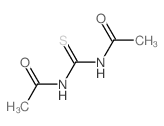 CAS号4984-27-4
CAS号4984-27-4 CAS号13250-46-9
CAS号13250-46-9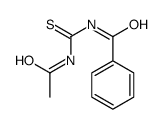 CAS号74346-74-0
CAS号74346-74-0 CAS号463-51-4
CAS号463-51-4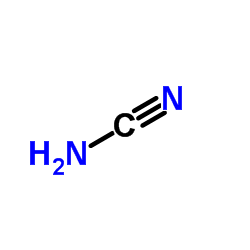 CAS号420-04-2
CAS号420-04-2 CAS号507-09-5
CAS号507-09-5 CAS号108-24-7
CAS号108-24-7 CAS号503-87-7
CAS号503-87-7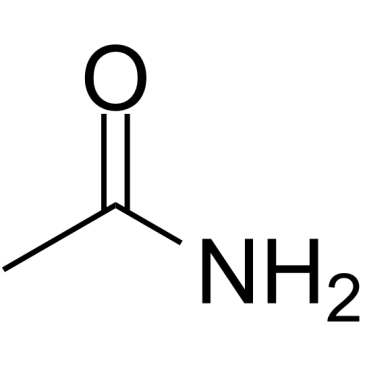 CAS号60-35-5
CAS号60-35-5 CAS号463-56-9
CAS号463-56-9 CAS号767-17-9
CAS号767-17-9 CAS号2719-23-5
CAS号2719-23-5 CAS号591-07-1
CAS号591-07-1 CAS号6590-95-0
CAS号6590-95-0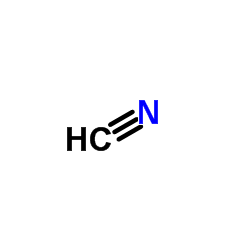 CAS号74-90-8
CAS号74-90-8 CAS号7336-51-8
CAS号7336-51-8 CAS号7460-59-5
CAS号7460-59-5